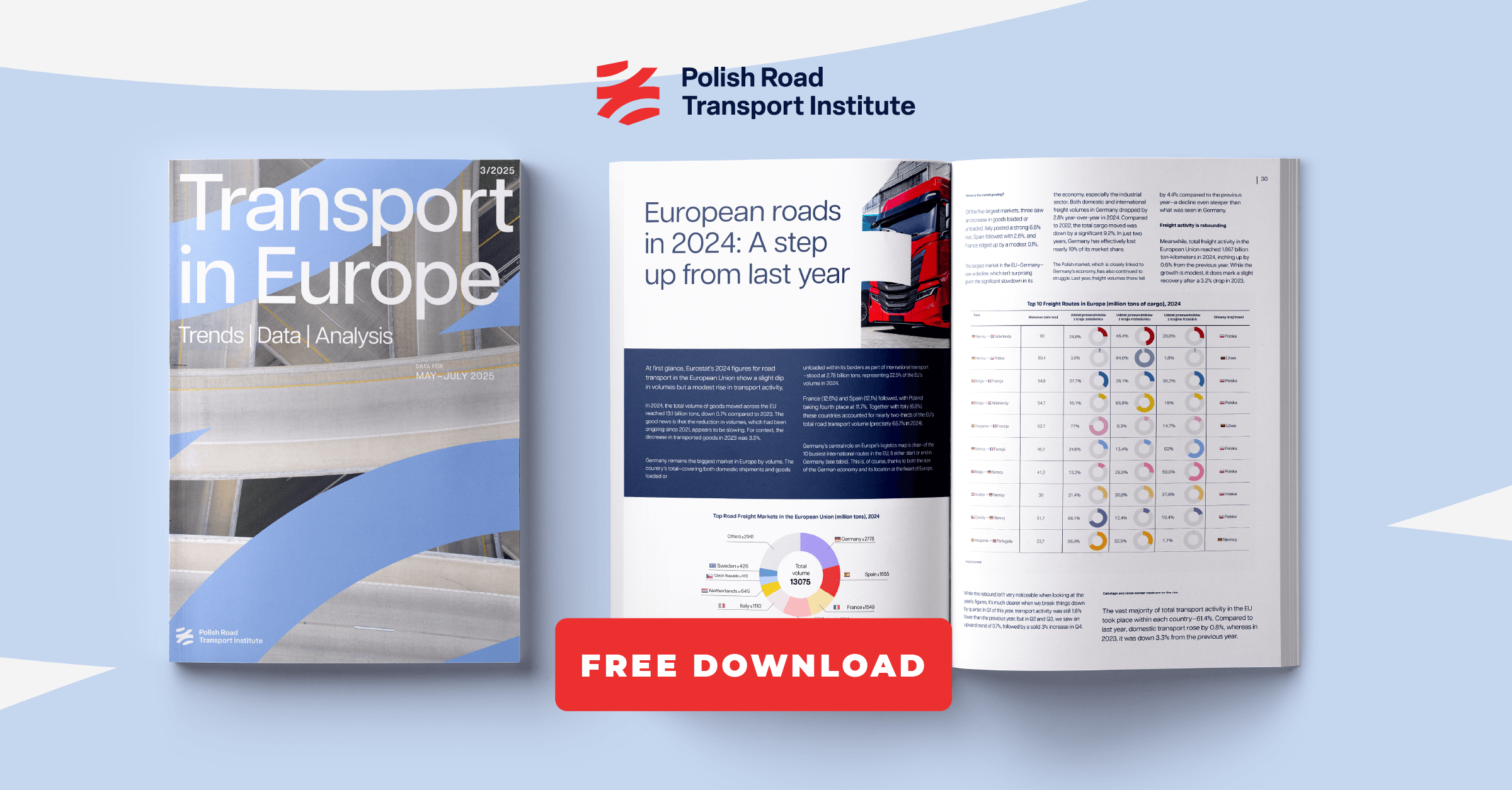
The latest issue of the report “Transport in Europe. Trends. Data. Analysis” is now available.

The report “Transport in Europe. Trends | Data | Analysis” is an analysis of macroeconomic data and data closely related to the transport industry for seven countries that are most important for the European TSL sector: Germany, Poland, France, Italy, Spain, Belgium, and the Netherlands.
In addition, all data is enriched with comments from industry practitioners seeking answers to questions about the causes of economic and business changes and forecasts for the future.
The report is therefore not just a compilation of the most important data, as there is no shortage of such publications on the market today. It is a comprehensive product for managers, managing directors, and transport managers, containing practical recommendations and presenting the views of experts from national and international European companies and institutions.
We answer the following questions:
-
What are the forecasts for contract rates at the end of 2025?
-
Why is demand for transport growing in Poland, but the level of activity among carriers is not keeping pace?
-
Can we already talk about a market revival in Germany?
-
What are the reasons for the freight Eldorado in Italy?
-
What do the latest macroeconomic and economic data mean for the TSL industry?
We present the views of renowned industry experts
“Freight rates are likely to continue rising in the coming months, although the pace of growth may slow somewhat. The stabilization of operating and fuel costs limits the risk of sharp increases, while continuing export demand and a shortage of vehicles in key directions continue to put pressure on prices," predicts Karol Kupczak, Director of Transport and Logistics at Flash Logistic.
"The number of shipments from Poland to Italy has been falling for three years now, and there are no signs of a clear rebound. The crisis in the automotive industry, which is one of the pillars of trade between these countries, plays a key role here. Poland supplies components and semi-finished products, while Italy is the final manufacturer and distribution center. The crisis in the automotive industry related to the transition to electromobility, the decline in demand for combustion engine cars, and production constraints has directly translated into reduced transport volumes," analyzes Maciej Zwyrtek, general sales director at Kuźnia Trans.
"Fewer and fewer carriers are willing to make long-term commitments, increasing their activity on SPOT markets. For years, analyses of SPOT vs. contract rates said a lot about trends. Now, however, contracts no longer guarantee that customer needs will actually be met. Larger customers still make decisions based on the lowest rates, and are then surprised when carriers withdraw from their commitments when they see that the orders they receive are unprofitable," says Paweł Trębicki, managing director, Rhenus Road Freight - Central East Region.
The decline in registrations in the largest economies is a “scissor effect”: weaker demand for transport, more expensive capital, and uncertainty surrounding powertrains (EURO 7, LEZ, support programs) are dampening new purchases, so companies are extending the life of their fleets and investing in productivity rather than volume. The key factor here is not only the macro cycle, but also the market architecture. Where smaller players with flexible financing dominate, the correction is spread out over time, while where large fleets and rigid investment policies prevail, the cuts are faster and deeper," explains Arleta Marczyńska, president of eXportsy.
"Within the next six months (until the beginning of 2026), the (Polish) market will enter a period of traditional year-end slowdown in terms of freight, which will limit export growth, especially in industrial sectors. There may be local declines in transport from Poland to Germany and France, with southern destinations (Spain, Italy) remaining strong," predicts Marek Chudy, TSL Antkowiak.
Want to know more?
Want access to data, analysis, and commentary from 21 experts?
| DOWNLOAD FOR FREE |
Grafika: Jerzy Mossakowski
